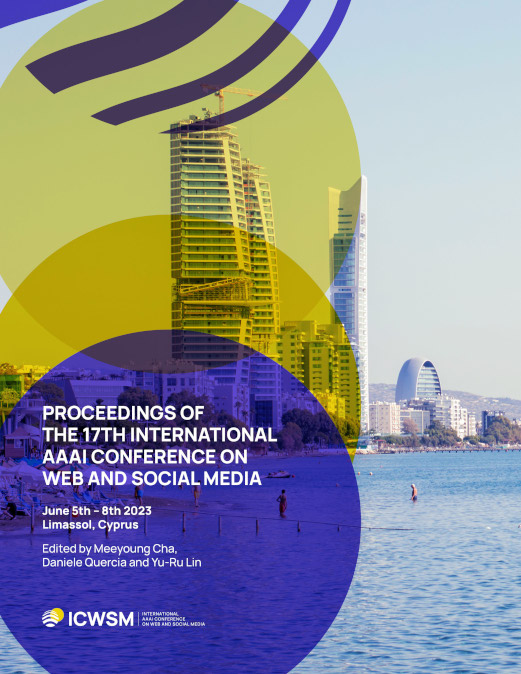How Circadian Rhythms Extracted from Social Media Relate to Physical Activity and Sleep
DOI:
https://doi.org/10.1609/icwsm.v17i1.22202Keywords:
Measuring predictability of real world phenomena based on social media, e.g., spanning politics, finance, and health, Qualitative and quantitative studies of social mediaAbstract
Circadian rhythm has been linked to both physical and mental health at an individual level in prior research. Such a link at population level has been long hypothesized but has never been tested, largely because of lack of data. To partly fix this literature gap, we need: a dataset on population-level circadian rhythms, a dataset on population-level health conditions, and strong associations between these two partly independent sets. Recent work has shown that affect on social media data relates to population-level circadian rhythms. Building upon that work, we extracted five circadian rhythm metrics from 6M Reddit posts across 18 major cities (for which the number of residents is highly correlated with the number of users), and paired them with three ground-truth health metrics (daily number of steps, sleep quantity, and sleep quality) extracted from 233K wearable users in these cities. We found that rhythms of online activity approximated sleeping patterns rather than, what the literature previously hypothesized, alertness levels. Despite that, we found that these rhythms, when computed in two specific times of the day (i.e., late at night and early morning), were still predictive of the three ground-truth health metrics: in general, healthier cities had morning spikes on social media, night dips, and expressions of positive affect. These results suggest that circadian rhythms on social media, if taken at two specific times of the day and operationalized with literature-driven metrics, can approximate the temporal evolution of people's shared underlying biological rhythm as it relates to physical activity (R2=0.492), sleep quantity (R2=0.765), and sleep quality (R2=0.624).Downloads
Published
2023-06-02
How to Cite
Zhou, K., Constantinides, M., Quercia, D., & Šćepanović, S. (2023). How Circadian Rhythms Extracted from Social Media Relate to Physical Activity and Sleep. Proceedings of the International AAAI Conference on Web and Social Media, 17(1), 948-959. https://doi.org/10.1609/icwsm.v17i1.22202
Issue
Section
Full Papers

